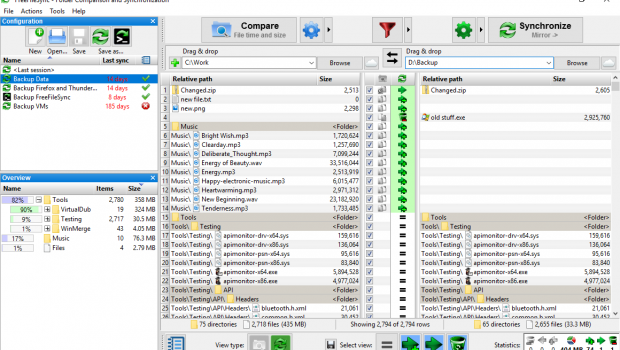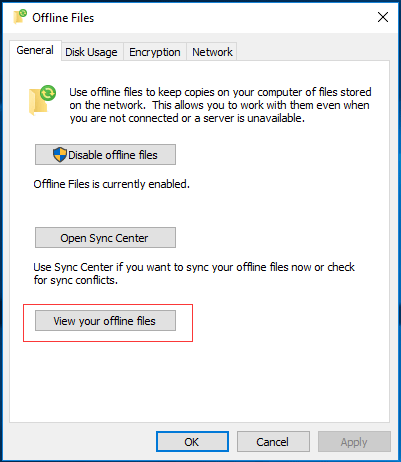

#File synchronization in windows windows#
With Windows Server 2012 and prior versions, file server administrators do not have modern object-oriented Windows PowerShell cmdlets to create, configure and manage DFS Replication. Wait – did I say DFSR Windows PowerShell? Oh yeah. I have a separate post coming with a nice walk through on this feature. What does this mean in real terms? Let’s look at a test run with 10 terabytes of data in a single volume comprising 14,000,000 files: Slowest but highest fidelity (and still faster than initial sync) Hash stored in database record for each file. Same hashing mechanism used by DFSR during normal operations. File size and last modified date-time stored in the database record for each file. Hash of ACL stored in the database record for each file. Requires that you preseed data perfectly and do not allow any modification of data during the clone processing on either server.

No validation of files on source or destination server. These ensure that if you are allowing users to alter data on the upstream server while cloning is occurring, files are later reconciled on the downstream.

If there are differences, DFSR only has to catch up the real delta of changes as part of a shortened initial sync process.Ĭloning provides three levels of file validation during the export and import processing. The existing initial sync portion of DFSR is now instantaneous if there are no differences. Build a primary server with no partners (or use an existing server with partners) Multi-terabyte data sets are typically infeasible due to the extended setup times the estimate for a 100TB dataset is 159 days to complete initial sync on a LAN, if performance is linear (spoiler alert: it’s not).ĭB cloning bypasses this process. This can make setup, disaster recovery, and hardware replacement very slow. DFSR spends most of its time in initial sync-even when administrators preseed files on the peer servers-examining metadata, staging files, and exchanging version vectors. ĭFSR Database Cloning is an optional alternative to the classic initial sync process introduced in Windows Server 2003 R2. Currently these are:ĭFS Replication Initial Sync in Windows Server 2012 R2: Attack of the ClonesĭFS Replication in Windows Server 2012 R2: If You Only Knew the Power of the Dark ShellĭFS Replication in Windows Server 2012 R2: Restoring Conflicted, Deleted and PreExisting files.
#File synchronization in windows series#
I have a series of deeper articles as well to get you rolling with more walkthroughs and architecture, as well as plenty of TechNet for the blog-a-phobic. It assumes that you have a previous working knowledge of DFSR, to include basic replication concepts and administration using the previous tools Today I’ll talk at a high level about how your business can benefit from this improved architecture. These include database cloning in lieu of initial sync, management through Windows PowerShell, file and folder restoration from conflicts and preexisting stores, substantial performance tuning options, database recovery content merging, and huge scalability limit changes. Windows Server 2012 R2 adds substantial features to DFSR in order to bring it in line with modern file replication scenarios for IT pros and information workers on enterprise networks. This is ok, but come on… this took three years? I expected more.” You might have read my post onīack in November and thought to yourself, “ Today’s blog post covers DFSR and how it applies to the larger topic of “Transform the Datacenter.” To read that post and see the other technologies discussed, read today’s post: “ ” series that is featured on Brad Anderson’sīlog. What’s New in Windows Server & System Center 2012 R2 First published on TECHNET on Jul 31, 2013


 0 kommentar(er)
0 kommentar(er)
